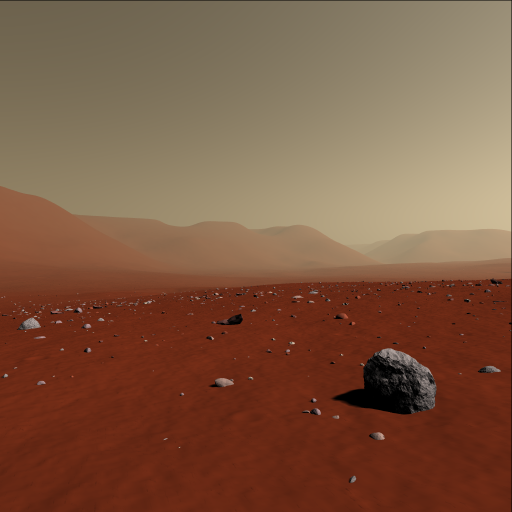PANGU – Planet and Asteroid Natural scene Generation Utility
PANGU is a powerful set of tools for modelling the surfaces of planetary bodies such as Mars, the Moon, Mercury and asteroids using real and synthetic data. It has the ability to generate camera, LIDAR and RADAR images from any position and orientation. These images can be used for off-line and closed-loop simulations of planetary landing, surface roving and in-orbit rendezvous operations. Models of spacecraft and rovers can be imported from CAD software, wrapped in MLI, given realistic material properties and included within PANGU simulations.
PANGU is designed to provide a high degree of realism while operating at near real-time speeds on modern PCs with graphics cards that support OpenGL, running on either Windows or Linux.
PANGU licences are sold by STAR-Dundee but the tool set was developed by the Space Technology Centre within the University of Dundee for ESA and is being used on several ESA studies and development projects aimed at producing precise and robust planetary lander guidance systems.
For more information about PANGU and other University of Dundee research activity see: pangu.software
Watch the following simulations to see PANGU in action:
- 40_vmc_orbit_720p_v2 (PANGU v4 simulation of part of a MEX/VMC orbit on 2010-May-27)
- 41_msl_mardi_edl_720p_v2 (PANGU v4 real-time simulation of the MSL Mars EDL on 2012-Aug-06)
- 42_phobos_phootprint_1280x720_v2 (PANGU v4 simulation of a hypothetical Phobos lander mission on 2010-May-29)
- 43_malapert_06_dd_fast_720p_v2 (PANGU v4 simulation of a Lunar Lander descent onto Malapert mountain)
- 44_itokawa_orbit_n=1800_720p_v2 (PANGU v4 simulation of Hayabusa/AMICA observing a rotation of Itokawa on 2005-Oct-01)
- 46_msl_mardi_fast_edl_720p_v2 (PANGU v4 fast simulation of the MSL/MARDI Mars EDL on 2012-Aug-06)
- 49_pluto_approach_lorri_720p_v1 (PANGU v4 simulation of New Horizons/LORRI on morning of Pluto flyby on 2015-Jul-14)
Product Features
Software tool
- Simulates planets and asteroids
- Simulates cameras and other sensors viewing those bodies
- Developed specifically to test vision based GNC algorithms
- Realistic and high performance
- Extensively tested and validated so that it can be used for testing flight systems
Open loop testing
- PANGU image sequence from known positions
- Fed to vision based navigation system
Closed loop testing
- Spacecraft dynamics simulation
- Gives PANGU camera position and orientation
- PANGU provides image of surface from that position
- Position and orientation of target object
- Can also be specified
- Useful for asteroids
Technical Specs
- Rendering features
Whole or partial planet, moon and asteroid surfaces
Multiple light sources:
- Sun
- Reflected light from planets/moons
- Spacecraft-mounted spotlight
Dynamic Shadows implemented using Parallel-Split Shadow Maps
Hardware-accelerated planetary atmosphere model
- Modelling features
Fractal terrain generator for planetary surface models and asteroids
Import PDS format digital elevation models (DEMs)
Support for different projections including polar stereographic
Import and enhance ICQ (asteroid) models
Stochastic techniques for modelling MLI sheets
XML based modelling language for spacecraft parts and materials
- Reflectance functions
Hapke (Lunar regolith)
Oren-Nayar (rough cloth/plaster)
Lunar-Lambert, Minnaert (alternative Lunar surfaces)
Blinn-Phong and Lambert
Cook-Torrance (spacecraft surfaces)
- Sensors & Projection modes
Optical images (perspective & orthographic)
Powerful camera model include:
- Aperture, exposure time, ADC resolution
- Shot noise, photo-response non-uniformity, read-out noise
- Quantum efficiency, dark current, full well capacity, blooming
- Optical distortion, PSF, baffles, radiation effects (e–/p+)
Range and slope rendered images
Simulation of RADAR/LIDAR data using parametric sensor models
- Integration with functional engineering simulators
TCP/IP server interface and Java API for e.g. Matlab/Simulink support.
- Hardware requirements
Graphics hardware capable of running OpenGL 3.0 or later for many functions
Earlier versions support a restricted set of rendering features






